Keystone Species Series: American Beaver
- Mar 5, 2021
What is the Keystone Species Series?
During this series we plan to highlight one animal each time to showcase the impact that even a single species can have on the surrounding environment. Just what IS a keystone species? “Keystone species are those which have an extremely high impact on a particular ecosystem relative to its population. Keystone species are also critical for the overall structure and function of an ecosystem, and influence which other types of plants and animals make up that ecosystem.” (www.biologydictionary.net)
A prime, timely example of the power of keystone species: the American Beaver
Photos in this article taken at Smale Riverfront Park during the March 2021 Ohio River Flood by Cincinnati Parks staff.
American Beaver
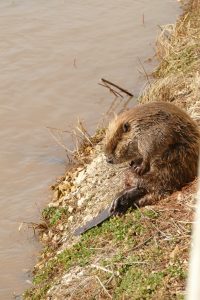
Imagine a landscape that has recently been ravaged by wildfire. A hilly, barren, charred moonscape of a place. It appears nothing could possibly have survived, and certainly nothing could live there now.
UNLESS…
Allow your eyes to follow that barren, charred out, post-apocalyptic landscape. Let your eyes wander down the hill, to what looks like it might be a ravine. Look closer. That ravine is actually a wetland. That wetland is a pond, and that pond has bog plants and shrubs and even trees that survived the fire!
Look even closer. Right in the center of that wetland, is a dam and a domed beaver lodge. Around that lodge is a small, surviving wetland that is teeming with life: fish, insects, reptiles, other mammals. All of whom survived the fire. All of whom will live on to play their part in the regeneration of the forest that burned around them.
The American beaver, Castor canadensis, has very few rivals when it comes to the degree to which it is able and compelled to alter the natural environment to fit its own needs. In fact, they’re right up there with humans on this. Like us, beavers are on the search for good home. A place with plenty of food, space, a nice place to build, and someone to raise a family with. Drawn to the sound of running water, beavers find a spot where they can slow that water down by damming it up, thus raising the water level before the dam and creating a nice place to build a lodge. Once the water level of their pond is to their liking, beavers start to build their home. This can be a family affair. Beaver can build a free standing lodge, or burrow into a streambank and build a bank lodge. We have both types of lodges in the Cincinnati area.
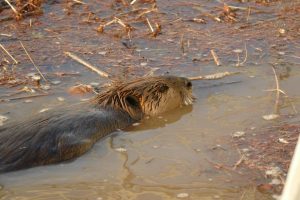
The damming and building of a new family home is really just the beginning. Once the pond is constructed and the lodge built, they then continue to live their lives. They cut down more trees with their perpetually growing, iron reinforced teeth. Some of these trees are used mostly for food. Some get cached in the pond for later. Some get whittled down further to file down their teeth, and the pieces used to patch up or add to their homes. As they move about their range, beavers continue to tweak the flow of water to their liking: adjusting dams and digging channels to move about even further. Beavers can move on land or water, but water is safer and faster for them. This lifetime of work has a drastic effect on the landscape.
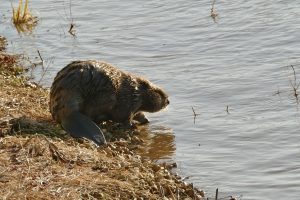
When beavers take down trees to eat from and build with, they open up the canopy of the forest. More light penetrates the forest floor. This forest management by beaver “wakes up” the seed bank already in the ground. New plants and trees start to sprout almost immediately; and grow quickly with all the new sunlight and space. Animals are attracted to this newly diversified ecosystem. Herbivores find more flavors of plants to eat. Predators are attracted to the abundance of herbivores.
Beavers, driven to live their best lives, drawn to the sound of running water, are compelled to alter the landscape in such a drastic way that they create whole new habitats within their home range. This new habitat is teeming with life: fish, birds, new plants, even algae and protozoa. Their dams and channels slow and stabilize water flow, help prevent erosion. This slower flow through mud and sticks filters and purifies water. This in turn helps all living things, including us. It’s truly remarkable.
WRITTEN BY: GIA GIAMMARINARO, CINCINNATI PARKS NATURALIST AT CALIFORNIA WOODS & BOB STAGGENBORG, NATURE GUYS PODCAST
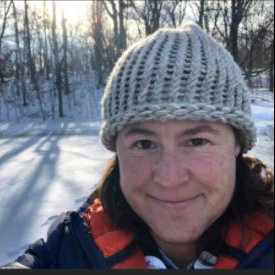 Gia Giammarinaro is Explore Nature’s lead naturalist at California Woods Nature Preserve. She has been with Cincinnati Parks for 14 years. Gia’s lifelong passion for nature became a vocational goal upon attending 6th Grade Camp, when she learned that you can hike all day and eat certain bark and flowers. For the last 20+ years, she has spent all of her work and some of her free time educating folks of all ages about the beauty, diversity, wonders and fun of nature. Her goal is to instill a sense of affinity with and curiosity about nature, so that conservation becomes natural to us all.
Gia Giammarinaro is Explore Nature’s lead naturalist at California Woods Nature Preserve. She has been with Cincinnati Parks for 14 years. Gia’s lifelong passion for nature became a vocational goal upon attending 6th Grade Camp, when she learned that you can hike all day and eat certain bark and flowers. For the last 20+ years, she has spent all of her work and some of her free time educating folks of all ages about the beauty, diversity, wonders and fun of nature. Her goal is to instill a sense of affinity with and curiosity about nature, so that conservation becomes natural to us all.
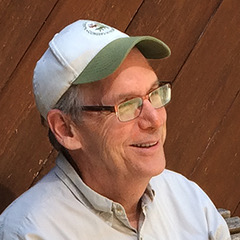 Bob Staggenborg is passionate about sharing his love of the natural world. After volunteering in a variety of nature positions Bob partnered with his friend and mentor Bill Creasey to create Nature Guys Podcast. Together they hosted and produced over 160 episodes in four years. After Bill lost his fight with cancer in August 2020 Bob is continuing Nature Guys with the help of a dedicated team of co-host naturalists. Nature Guys Podcasts connects people to the natural world with a unique blend of humor, storytelling and scientific knowledge.
Bob Staggenborg is passionate about sharing his love of the natural world. After volunteering in a variety of nature positions Bob partnered with his friend and mentor Bill Creasey to create Nature Guys Podcast. Together they hosted and produced over 160 episodes in four years. After Bill lost his fight with cancer in August 2020 Bob is continuing Nature Guys with the help of a dedicated team of co-host naturalists. Nature Guys Podcasts connects people to the natural world with a unique blend of humor, storytelling and scientific knowledge.
